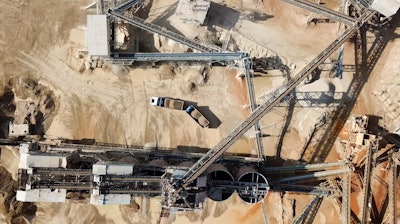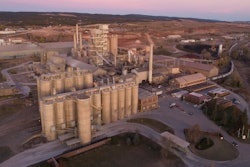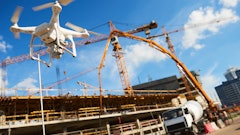
On August 20, CNBC published a 10-minute video discussing the cement industry, cement shortages, and how it could keep up with the $1 trillion funding coming from the Infrastructure bill. Now, that funding is going to not only go towards concrete-based constructions but a significant amount will, considering concrete is key in our roads, bridges, transporting water, etc.
Guests offering commentary include:
- Mike Ireland, CEO of the Portland Cement Association;
- Rick Bohan, Vice President, Sustainability of the Portland Cement Association
- Ed Sullivan, Chief Economist of the Portland Cement Association;
- Anirban Basu, Chief Economist of the Associated Builders and Contractors;
- Ed Pany, Atlas Cement Company Memorial Museum Curator; and
- Brett McMahon, CEO of Miller & Long Co., Inc.
The video is directed towards the main public audience and starts with explaining how concrete is made. Focusing on the processing of cement at the plant and pops in some intriguing figures and statistics. One of which is the projected INCREASED demand of the global cement market to grow more than 43% to over $450 billion by 2028 (Fortune Business Insights).
Discussing the cement shortage: "We're not unlike many industries, COVID caused disruptions in supply," says Ed Sullivan, Chief Economist of the Portland Cement Association. With millennials now coming of age and the infrastructure funding just around the corner, it's expected that the demand for cement and concrete will cause prices to rise—possibly creating a bidding "war" (of sorts) potentially allowing only those that can afford it to purchase that new driveway, massive slab for their company's warehouse expansion, etc. The video also comments on the carbon emissions and the effect that that demand could have on the environment.
Can the Industry Keep Up?
Mechanically, yes. The video points to one quarry with an abundance of limestone for the creation of portland limestone cement. Realistically? It remains to be seen. Cement isn't the only thing missing from the concrete construction world—it's the labor shortage that seems to be a key component.
"As an economist who wants to see a larger U.S. economy, a more efficient U.S. economy, one who wants to see more infrastructure available to its people it's frustrating to see so few young Americans, in particular, enter the skilled trades," says Anirban Basu, Chief Economist of the Associated Builders and Contractors.
He continues, "And that's again, one of the reasons that we have these shortages of infrastructure, these very high prices. So, in the long term, I suspect we will have enough cement. But in the short term, we continue to have these supply chain difficulties particularly in certain markets and so prices are rising. But right now, apparently, supply is not rising to meet demand - the capacity is not there. I still think that we'll be faced with shortages through the bowels of the year but you'll start to see a better equilibrium form over the course of this year and into next year."
Watch the full video below.



















